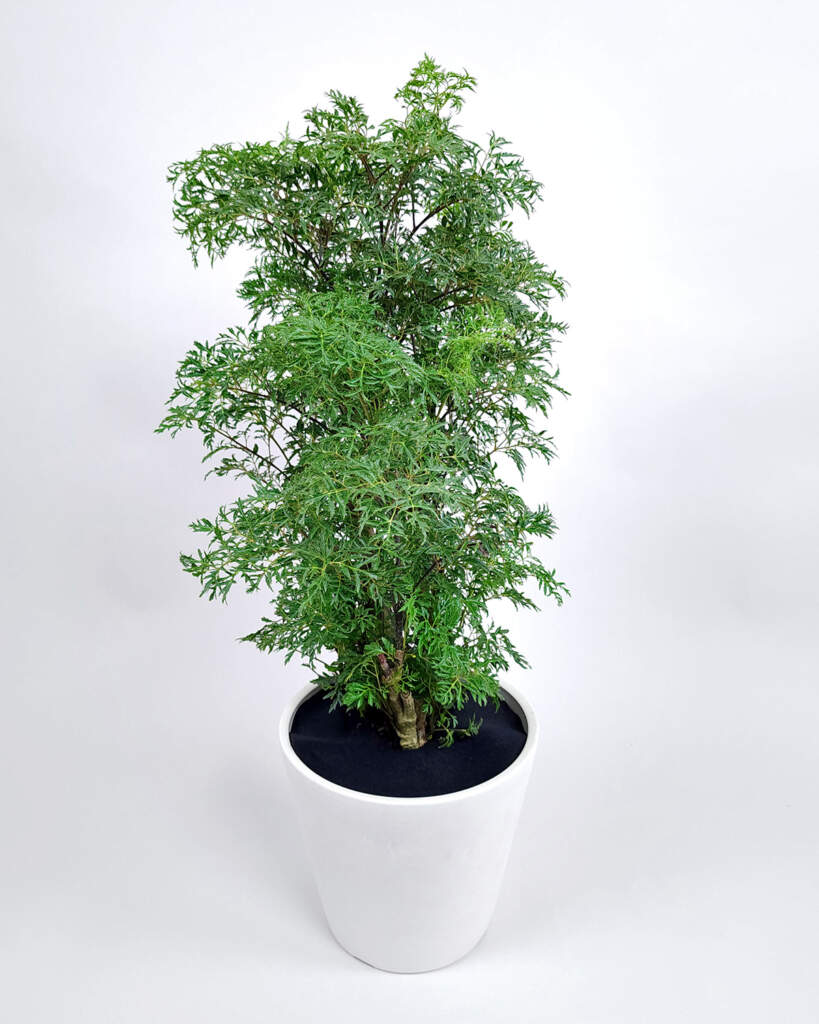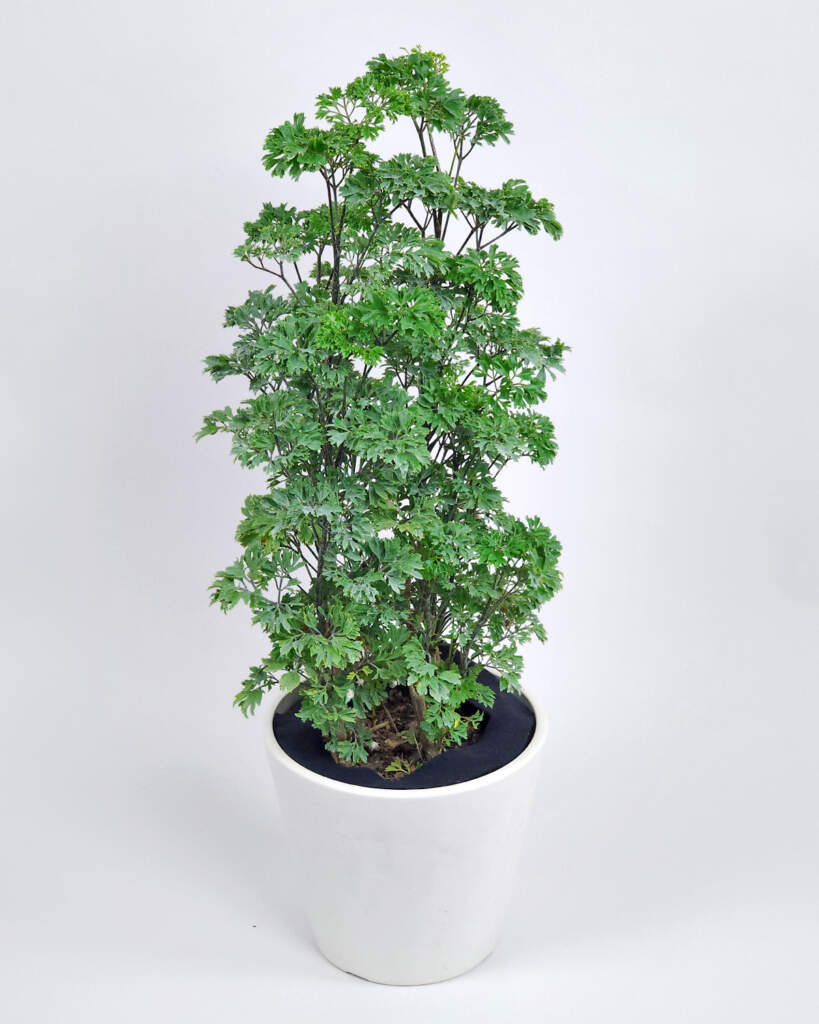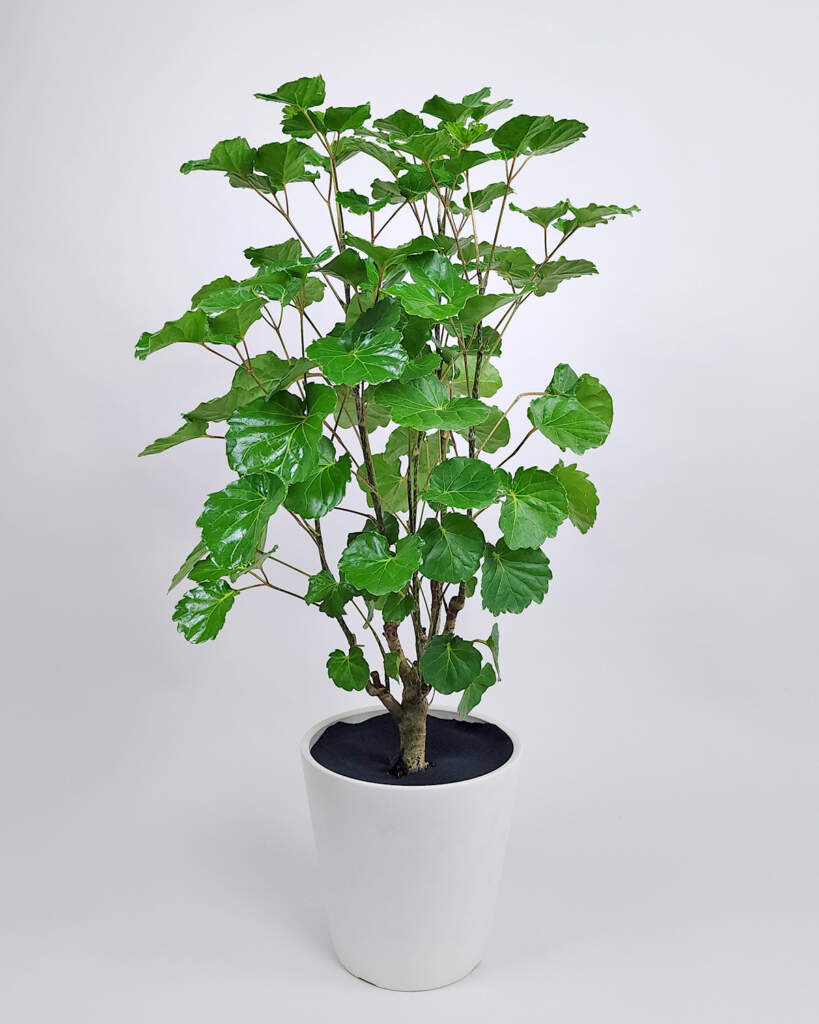Aralia plants, belonging to the Araliaceae family, are renowned for their ornate foliage and architectural presence. These plants, originating from various regions across Asia and the Americas, offer a multitude of species and cultivars, each with unique characteristics. This guide delves into their origins, popular cultivars, and provides detailed care instructions to help you successfully cultivate these striking plants.
With its lush, tropical foliage and gracefully arching stems, the Balfour Aralia makes a striking addition to indoor and outdoor spaces alike. However, this plant can reach towering heights in the right conditions. Selecting the appropriate size Balfour Aralia for your landscape is key to ensuring it fits the space beautifully without becoming unruly.
From petite container varieties to tall, tree-like specimens consider the following factors when choosing your Balfour Aralia size.
Intended Use and Location
Think about how you want to utilize the plant in your landscape and where it will be situated. Compact Aralias in 6 inch pots are ideal for desks and tabletops. Larger 14-16 inch plants in trellised planters can make living sculptures on patios or poolsides. For striking vertical accents, choose pole-trained Aralias 5-6 feet tall.
If you need a hedge or border, opt for 3-4 foot juvenile plants that can be sheared into shape. Mature 8-10 foot Aralias make excellent foundation plantings or driveway specimens Their height also allows them to peer over shorter shrubs and flowers
Match the scale of your Aralia to the overall dimensions of its location. A too-small plant gets lost while an oversized variety overwhelms. Visit the site and visualize the planting area before purchasing.
Available Space and Spread
When planted in the landscape, the Balfour Aralia can reach up to 15 feet tall x 10 feet wide at maturity Be sure to allow adequate space for the plant’s expected spread as it grows The roots also spread outward, so don’t plant too close to sidewalks, patios or foundations.
For compact areas, look for dwarf cultivars that grow just 4-6 feet tall and wide. ‘Limelight’ and ‘Golden Ingot’ are two dwarf varieties perfect for smaller gardens. Allow more space for full-size varieties, or prune regularly to contain size.
Desired Growth Habit
Balfour Aralias take on different forms depending on cultivar. Weeping varieties like ‘Silver King’ cascade gracefully, while erect, columnar types like ‘Tower’ reach vertically. There are also dwarf mounding forms and taller vase-shaped selections.
Consider your design goals and choose a habit that fits. Weeping and mounding Aralias complement ponds or containers. Columnar varieties make excellent upright accents or narrow privacy screens while wide, spreading types fill borders.
Environmental Factors
The amount of space your Balfour Aralia will eventually fill depends largely on environmental factors like sunlight, soil quality, and climate. Plants grown in full sun or sandy, fertile soils reach the height and width limits faster. Shady or poor conditions produce smaller, slower growing plants.
If your landscape offers less than ideal conditions, choose larger specimens for a more immediate impact. For optimum growth habitats, select younger plants with room to expand to their full dimensions.
Pruning and Maintenance
To control the size of your Aralia, commit to regular pruning and maintenance. Like frequent haircuts, trimming the outer branches and shoot tips will keep the plant compact and tidy. Removing the large lower leaves periodically lifts the canopy.
Untrimmed Aralias become leggy and sparse at their bases. Set realistic goals for pruning sessions to keep growth in check. Removing too much interior foliage stresses the plant. Never shear the Aralia like a hedge.
Available Budget
Balfour Aralia prices correspond with the plant’s age and size. While tempting, avoid purchasing an oversized Aralia you can scarcely afford. The impact may be instant but the plant will suffer from insufficient care and nutrients.
Opt for smaller, more economical plants you can nurture over time. With regular fertilization and pruning, these Aralias will soon achieve an impressive scale. Prioritize quality over bargain basement deals when reviewing inventory.
Pairing With Companion Plants
When incorporated into mixed beds and borders, select Aralia sizes that complement their companions. Dwarf varieties under 3 feet tall showcase lower-growing perennials and annuals. Larger types frame shorter shrubs without overwhelming them.
Ensure your Aralia size provides visual unity and balance to the entire landscape. If other architectural plants dominate, choose a small accent Aralia. Maximize vertical layers by varying heights and forms.
By considering your specific needs and conditions, you can select a Balfour Aralia size that makes the right statement. Tiny tabletop plants, towering living sculptures, graceful weeping accents or pruned foundation shrubs – the possibilities are endless. With an appropriate scale, your landscape will come to life.
Key Tips for Selecting the Right Balfour Aralia Size
-
Consider the intended location and use when choosing plant size.
-
Allow adequate space for the Aralia’s expected mature height and spread.
-
Pick a growth habit like weeping, mounding or columnar that suits your design needs.
-
Factor in environmental conditions that may influence the plant’s ultimate size.
-
Commit to regular pruning and maintenance to restrict oversized growth.
-
Select a size you can afford to care for properly over time.
-
Choose Aralia sizes that complement other landscape plants.
-
Avoid drastically over or undersizing the plant for a given space.
-
Remember, taller is not always better – sometimes small makes the best statement.
Common Questions about Balfour Aralia Sizes
What is the smallest size Balfour Aralia I can buy?
You can purchase starter plants in 4-6 inch pots. These make great tabletop or desk accents. Avoid seedlings under 1 foot tall.
What size Balfour Aralia is best for patio containers?
Look for plants 1-2 feet tall sold in 12-14 inch diameter pots for patio planters. Ensure the pot is large enough to allow ample root growth.
How tall do dwarf Balfour Aralia varieties grow?
Dwarf cultivars reach just 4-6 feet tall at maturity. ‘Limelight’, ‘Golden Ingot’, and ‘Elfin’ are commonly available compact varieties.
Should I buy the largest Balfour Aralia I can afford?
Not necessarily. Oversized plants are difficult to establish. Select smaller plants you can care for over time. They will soon achieve impressive scale.
How can I restrict the size of Balfour Aralia in my garden?
Regular pruning of outer branches and shoot tips contains size. Removing lower interior leaves lifts the canopy. Avoid drastic shearing.
When should I prune and trim my Balfour Aralia?
Prune in early spring before the main growth period. Remove crossed, damaged stems and trim just above outward facing buds. Never prune more than 20% at once.
What conditions produce the largest Balfour Aralias?
Plants reach maximum size in full sun and fertile, well-draining soil with regular water and fertilizer. Shady or poor conditions limit growth.
How much space do I need for a mature Balfour Aralia?
Allow 15 feet tall x 10 feet wide for full grown plants. Dwarf varieties need just 4-6 feet in each direction. Check tag for mature dimensions.
Can I plant a Balfour Aralia near my home’s foundation?
Plant at least 5 feet away from the foundation once fully grown. Roots can damage patios and walls as they spread.
By selecting the right Balfour Aralia size for your unique landscape, you can maximize the visual impact while minimizing maintenance. Follow these tips and enjoy this tropical beauty without it taking over the yard.

Scientific Name: Polyscias scutellaria ‘Balfourii’
Overview: Polyscias scutellaria ‘Balfourii’, commonly known as Balfour Aralia, is a striking houseplant that brings an air of sophistication and tropical beauty to any indoor space. This elegant variety is celebrated for its unique, variegated foliage, featuring deep green leaves with creamy white edges, providing a vivid contrast that catches the eye. Perfect for creating a focal point in a room, ‘Balfourii’ grows upright and can reach up to 4-6 feet in height, making it an excellent choice for adding vertical interest. Adaptable to a range of indoor conditions, it thrives in bright, indirect light and requires moderate watering, making it relatively easy to care for.
This item ships in a grower pot.
Pruning helps maintain the desired shape and size, especially for the bushier cultivars. Trim back leggy growth and remove any dead or yellowing leaves.
Aralias are susceptible to pests like spider mites, mealybugs, and aphids. Regular inspections and prompt treatment with insecticidal soap or neem oil are crucial. Good air circulation helps prevent fungal diseases.
Repot your aralia every 2-3 years or when it becomes root-bound. Choose a pot only slightly larger than the previous one to avoid excessive soil moisture.
Aralias can be propagated from stem cuttings or seeds. For stem cuttings, use a rooting hormone and provide consistent humidity and warmth for best results.
In colder climates, bring outdoor aralias indoors or provide adequate protection. Reduce watering and stop fertilizing during this dormant period.
Variegated aralias need more light than their green counterparts to maintain their unique coloration.

Scientific Name: Polyscias fruticosa
Common Names: Ming Aralia, Polynesian Aralia
Overview: The Ming Aralia (Polyscias fruticosa) is an exquisite and graceful houseplant, cherished for its finely divided, feathery foliage. This elegant plant showcases layers of rich green leaves, creating a lush, dense canopy atop slender, woody stems. Its unique, oriental look adds a sophisticated, natural beauty to any indoor environment. Typically reaching a height of 6-8 feet when grown indoors, it can be easily pruned to maintain a smaller, more compact shape, suiting various spaces from office corners to cozy living rooms. Ming Aralia thrives in bright, indirect light and prefers a consistently moist soil environment, without being waterlogged. Regular misting helps to maintain the humidity levels it loves. It’s a great choice for plant enthusiasts looking for a slightly challenging yet rewarding plant.
Prefers warmer temperatures and higher humidity. Its delicate leaves are prone to browning if conditions are not optimal.
Requires regular pruning to maintain its dense, bushy shape. It’s more tolerant of lower light conditions than other varieties.
Being more cold-tolerant, it’s well-suited for outdoor gardens in temperate regions. It prefers shadier conditions and can tolerate lower humidity levels.

Origins and Diversity of the Aralia
Aralias, sometimes referred to as Spikenards, originate from a wide range of climatic conditions, from the cold mountains of Japan to the tropical regions of Central and South America. This diversity has led to a variety of species, each adapted to its native habitat. Popular species include the Polyscias scutellaria (Shield Aralia), Ming Aralia (Polyscias fruticosa), and the Fatsia japonica (Japanese Aralia), to name a few.
To thrive, aralias require specific conditions that mimic their natural habitat.
Aralias prefer bright, indirect light. Direct sunlight can scorch their leaves, while too little light may cause leggy growth. A north-facing window is ideal for indoor plants.
Most aralia species enjoy a temperate climate, with temperatures ranging from 60-85°F (15-29°C). They also prefer high humidity, which can be achieved through regular misting, using a humidifier, or placing the plant on a pebble tray with water.
Watering requirements vary by species, but most aralias prefer consistently moist soil. Overwatering can lead to root rot, so it’s crucial to let the topsoil dry out slightly between waterings.
A well-draining potting mix is essential. You can create a suitable mix by combining regular potting soil with perlite or orchid bark to improve drainage.
Feed your aralia with a balanced, water-soluble fertilizer every month during the growing season. Reduce feeding in winter when the plant’s growth naturally slows.

